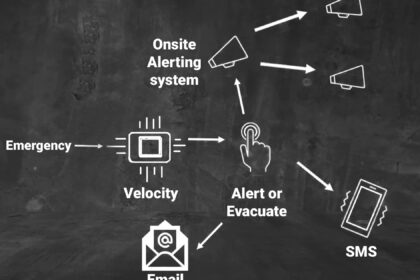
Emergencies happen every day. Whether it’s natural disasters such as fires, earthquakes, flooding or a security breach that puts employees on your premises at risk, it’s always better to be prepared. Whilst we cannot always predict unforeseen incidents, we can use technology to facilitate and implement efficient emergency processes.
The technological advances in recent years have been valuable in helping industries manage emergency incidents. The Internet of things (IoT) has been particularly progressive in this sector advancing the way companies assess emergency situations. IoT can aid in the 2 main phases of emergency management, preparation, and response. These phases are considered vital in reducing the impact of the emergency.
Preparation
- IoT can be used for monitoring water, toxins and weight levels.
- Sensors to detect volcanic and other activities.
- Infrastructure protection with predictive maintenance.
- The ability to control stock and asset tracking.
- Monitor warning system.
Response
- Predictive procedure to enable such things as alerting and locking systems
- Vehicle and item tracking
- Information can be gathered on events for future analysis for prospective events.
Pacific National is a leading freight company in Australia with over 3,400 employees and maintaining their safety is of the utmost importance. With this in mind, they decided to collaborate with Simoco Wireless Solutions to create an alert and evacuation system using Velocity. The system is designed to inform the control centre of pending issues and notify onsite staff via Alerting tone or evacuation tone depending on the emergency.
The radio bearer is based on the Simoco SDM610 digital radio which uses a status messaging function to trigger the tone generators which in turn feeds the amplifiers. The commencement of the alerts is performed using an activation panel that feeds directly into a Simoco Velocity EC-800 series unit. The activation command is then processed using a Node-Red application running in the Velocity unit. The Velocity uses the Node-Red programming language to permit simple reprogramming and future changes. The system uses a battery backup in the event of a mains failure to ensure reliability and resilience. Due to the flexibility of the Velocity product with its inherent broadband LTE capability, activation of the system isn’t limited to one fixed location.
The example can be seen in the video
Click Here to discuss how Simoco Wireless Solutions can help with your emergency alert and evacuation systems.


